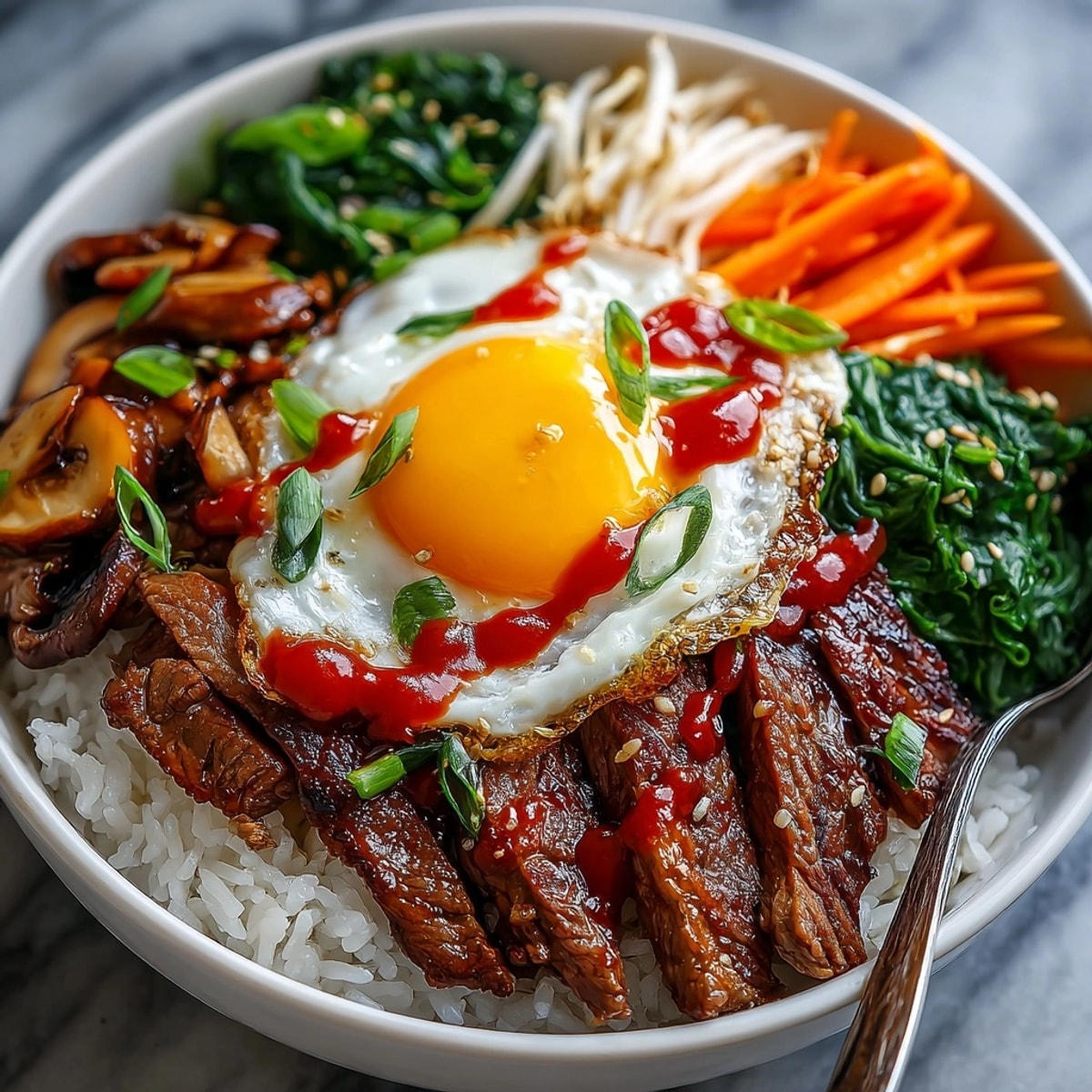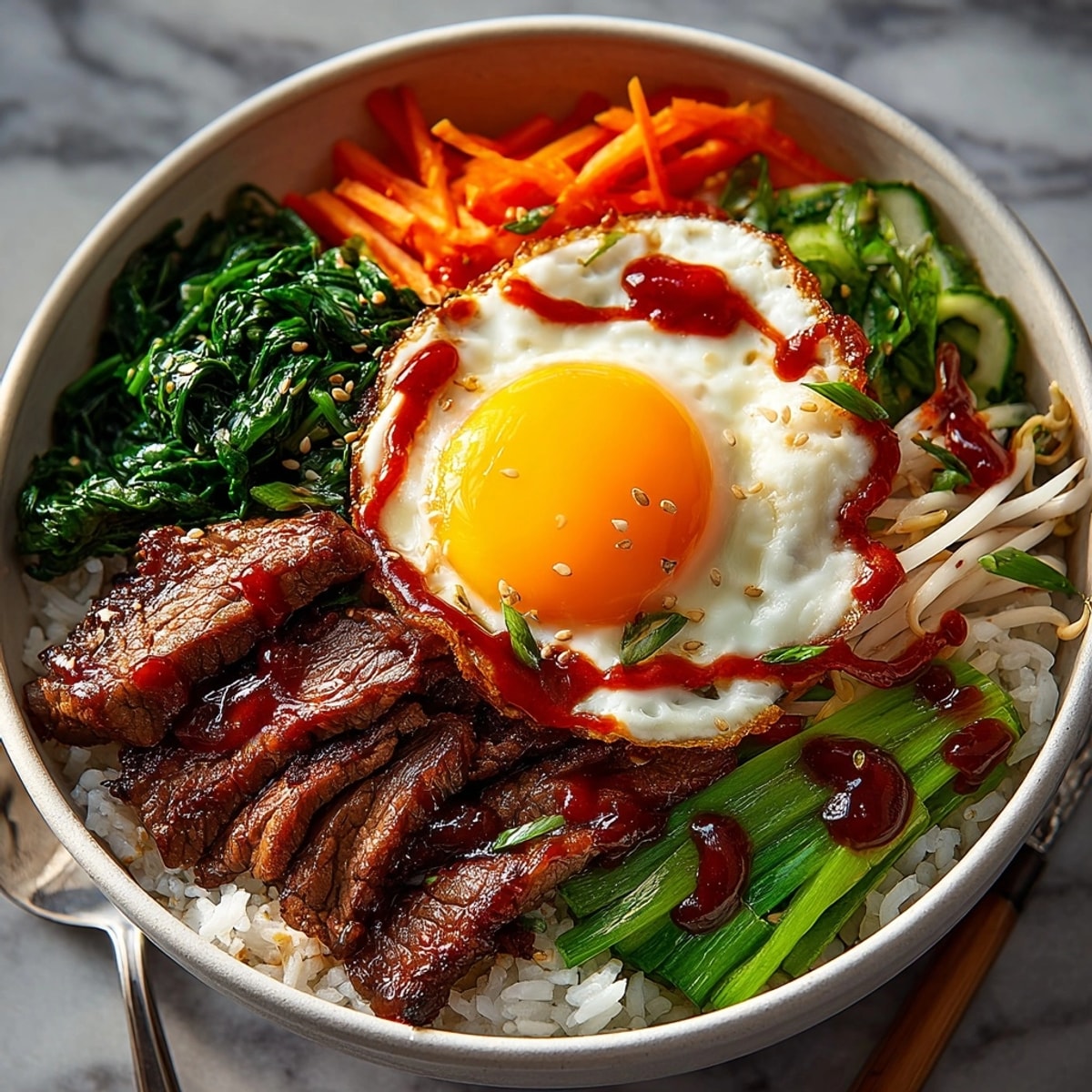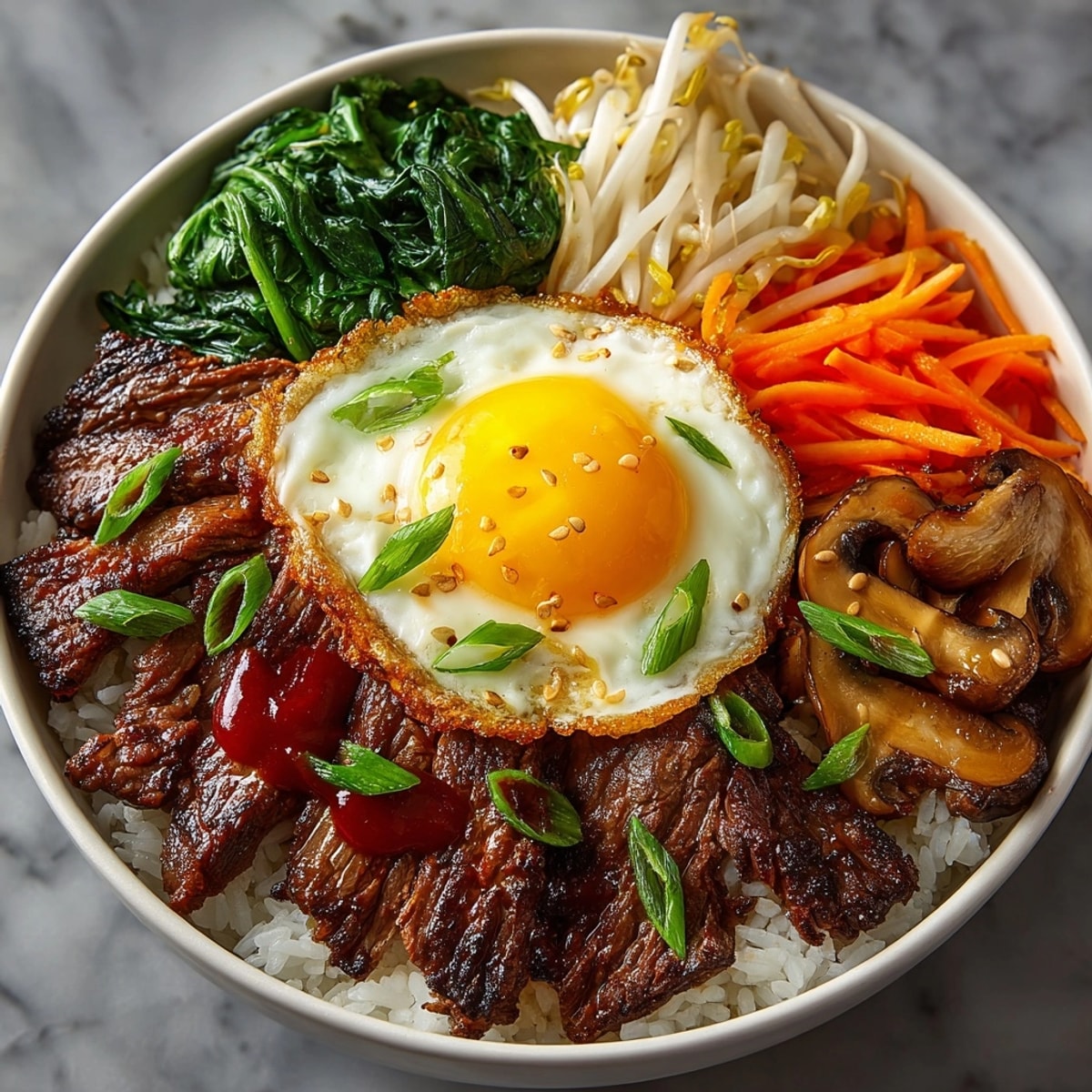 Save
Save This colorful Korean Beef Bibimbap Bowl brings together sizzling marinated beef, crisp sautéed vegetables, and a punchy gochujang sauce over steaming rice. It is one of those dinners that always wakes up my taste buds and makes even midweek nights feel special—plus, every member of my family can build a bowl their way which means no more dinnertime complaints.
I started making Bibimbap during our weekly family Korean night and it quickly became an absolute favorite. The sizzle of beef hitting the pan is enough to bring everyone running to the kitchen.
Ingredients
- Jasmine or short-grain white rice: This type gets just the right stickiness and makes a comforting base for everything else
- Ground beef or thinly sliced ribeye: Choose grass-fed for richer flavor Look for meat with some fat to keep it juicy
- Gochujang: Korean chili paste adds deep spicy-sweet flavor Try to find one with minimal additives for best taste
- Soy sauce: Use low-sodium if you want to control the saltiness and look for naturally brewed
- Sesame oil: Toasted sesame oil is key for that signature nuttiness Always check the expiration date
- Carrots: opt for bright firm carrots They bring color and a faint sweetness
- Zucchini: Look for small to medium that feel heavy The fresher they are the better the texture
- Fresh baby spinach or regular spinach: Lively green color and mild taste
- Eggs: Free-range have richer yolks for tasty sunny-side up tops
- Garlic and scallions: Pick firm cloves and crisp scallions They bring that characteristic bite
- Kimchi: optional but definitely adds zing Try a brand you love or homemade for extra bragging rights
- Toasted sesame seeds: Sprinkle on top for crunch and a finishing flourish
Instructions
- Cook the Rice:
- Rinse your rice until the water runs mostly clear then cook it using your preferred method. For jasmine or short-grain rice I use a 1 to 1.25 ratio of rice to water. Once done fluff the rice and keep it covered to hold in the steam
- Marinate and Cook the Beef:
- Toss your beef in soy sauce gochujang a drizzle of sesame oil and minced garlic. Let it soak for at least ten minutes. Heat a large skillet and spread the beef out so it can sizzle undisturbed for about two minutes before stirring until browned and just cooked
- Prep and Sauté Vegetables:
- Slice carrots and zucchini into neat matchsticks or half moons. For the classic vibe quickly cook each vegetable separately with a touch of oil and a sprinkle of salt until just tender but still bright. Quickly wilt the spinach in the same pan to soak up flavors
- Fry Eggs:
- Heat a little oil in the pan and gently crack in the eggs one per person. Fry over medium heat until whites are set but yolks are delightfully runny This gooey yolk makes the sauce extra luscious
- Assemble the Bowls:
- To each bowl add a scoop of rice arrange beef and veggies into neat sections around the bowl nestle the fried egg on top and scatter over the sesame seeds scallions and a spoonful of kimchi if using
- Garnish and Drizzle:
- Drizzle extra gochujang sauce and a touch more sesame oil or soy sauce if you like Give everything a final sprinkle of sesame seeds and serve immediately
 Save
Save The first time I tried adding kimchi to my bowl it was a total game-changer. Now I love experimenting with different seasonal veggies with each batch—no two bowls are quite the same and that keeps things exciting every time.
Storage Tips
For leftovers cool everything quickly and store rice beef vegetables and sauce separately in airtight containers in the fridge. Rice will stay fresh for up to three days and reheats beautifully with a splash of water to restore fluffiness. Vegetables and beef can be lightly refreshed in a skillet before serving.
Ingredient Substitutions
You do not have to use beef—chicken tofu or even mushrooms work well for a meat-free spin. If you cannot find gochujang mix a little Sriracha and miso paste together for a similar kick. No zucchini on hand Swap in bell peppers or snap peas for their crunch.
Serving Suggestions
Make it a feast with small bowls of extra kimchi pickled radishes or a quick cucumber salad on the side. You can also let everyone build their own bowl so kids or guests can skip the spicy sauce or pile on the parts they love most.
Cultural Context
Bibimbap means mixed rice in Korean and is beloved as a comfort dish perfect for using up leftovers. Traditionally served in hot stone bowls for extra texture at the bottom this home version captures the spirit while staying weeknight-friendly.
Seasonal Adaptations
Spring tastes fantastic with thin asparagus or spinach
Summer welcomes fresh cherry tomatoes and crisp cucumber
Autumn is great for roasted sweet potato and mushrooms
Winter is a treat when you add sautéed bean sprouts and hearty greens
 Save
Save When I hosted a family weekend everyone customized their bowl and my picky niece ended up eating spinach for the very first time without protest.
Recipe Guide
- → What cut of beef works best?
Thinly sliced sirloin, ribeye, or flank steak are ideal for tenderness and quick cooking in bibimbap bowls.
- → Can I substitute vegetables?
Yes, feel free to use seasonal vegetables like mushrooms, bell peppers, bean sprouts, or any favorites for added variety.
- → How is gochujang sauce used?
Gochujang is drizzled over the assembled bowl for spicy, tangy flavor. Mix with a touch of sesame oil and sugar for balance.
- → Is it necessary to add a fried egg?
A fried or poached egg gives creamy texture, but you may omit or substitute with tofu for a plant-based option.
- → Which rice is best for bibimbap bowls?
Short-grain white rice offers classic stickiness and flavor, but brown rice or cauliflower rice may be used for dietary preferences.